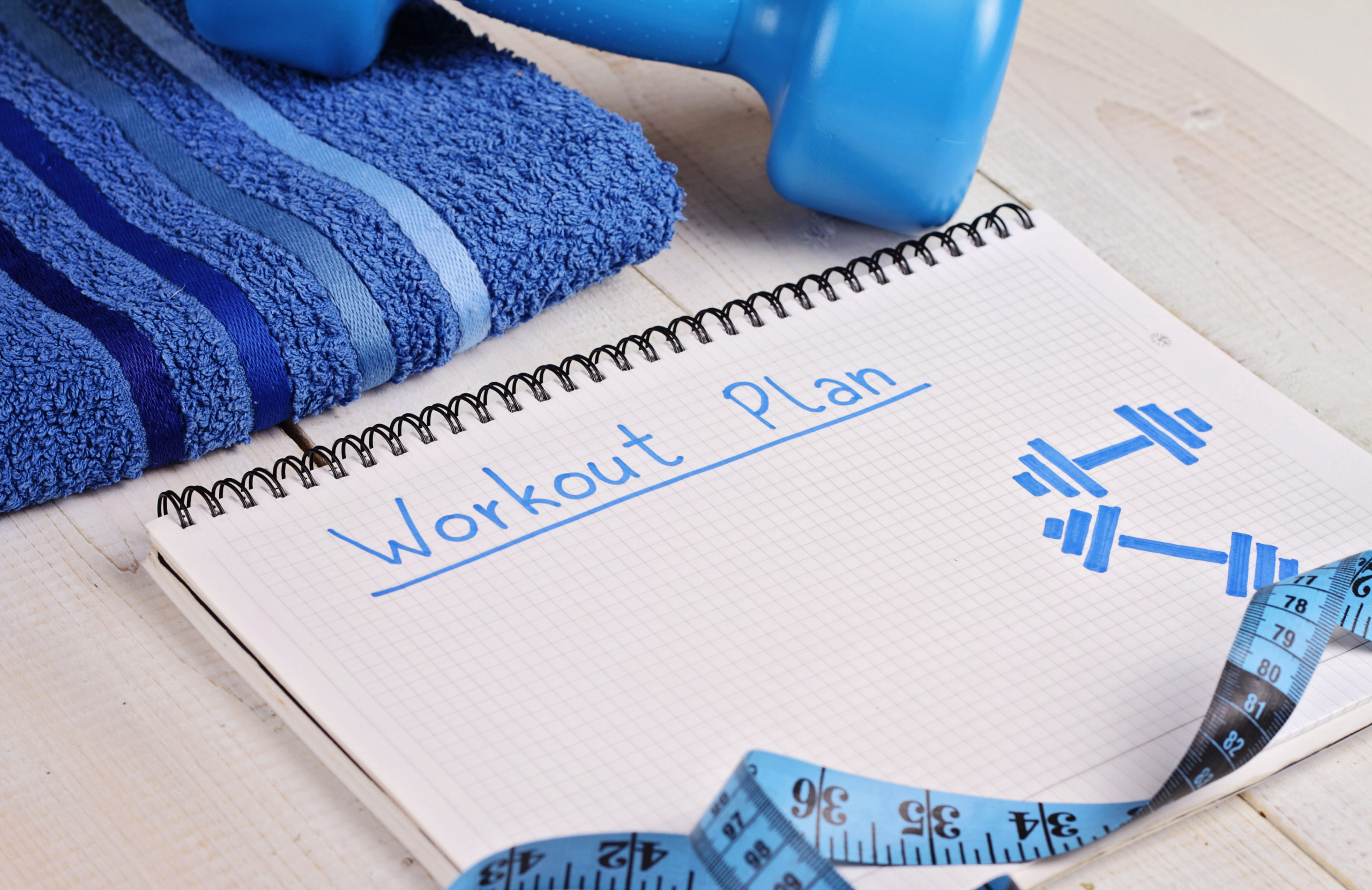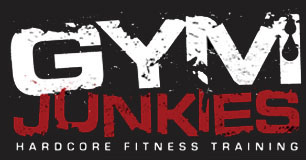
So you have been working out for a while now, wondering when, if and how frequently should a workout program be updated? Do I go heavier or lighter? Longer rest or shorter rest periods? Maybe I add in some drop sets and supersets? The questions are endless, and we hope you have many of them. Because only through curiosity can there be constant learning, and therefore progress. We are exploring, how frequently should a workout program be updated?
Programming and changing your workout routines are important to avoid stagnation and plateaus. Not only that but to hit your goals in an efficient manner as well. Before we begin to look into when to change our workout routine, we will first understand what we want to achieve within a workout program. Afterward, we will look into when it should be changed.
What Do We Want to Achieve Within a Workout?

When we work out to build muscle, gain strength or lose fat, we apply different stimuli or stress to our bodies. The types of stress can be varied with different repetitions, sets, rest periods, and so on.
Thereby, creating a biological state in the body that it responds to by adapting. The body adapts by performing different types of processes. These processes can negatively or positively affect our training goals, depending on how we match nutrition and training. Focusing on one stimulus for too long will lead to stagnation as the body’s ability to adapt decreases.
What kind of stimuli we apply is very important depending on your training goals. Whether we are focused on building muscle or recomposition, everything will vary.
We can categorize our training into three different phases. They are metabolic, hypertrophy, and neurological.
Of course, they will sometimes overlap, but there are some main distinctions between them which we will go into.
Metabolic Workouts
Metabolic workouts are used to burn a lot of energy, or Adenosine Triphosphate (ATP) in medical terms. ATP is the energy source we use and store in our cells (Dunn; Grider, 2022).
Hence, large amounts of glycogen is burned during this phase.
You might be quick to think that this is simply for fat loss, but this is not necessarily true. While yes, this will be an important phase during fat loss, it can also be used for hypertrophy or de-loading from a neurological workout.
Features of Metabolic Workouts:
- Higher work ratios, lower rest ratios
- Significantly long time under tension
- The high necessity for carbohydrates
- High production of lactic acid and metabolic waste
Hypertrophy Workouts
When it comes to hypertrophy workouts, this is mainly the phase we want to be in for muscle growth.
Our goals in the hypertrophy phase are to stimulate protein synthesis to expand muscle cells, as well as create new ones.
The weights will usually be heavier in this phase compared to the metabolic phase, but not as heavy as in the neurological phase.
Again, this is not a phase exclusively for building muscle. You might want to use hypertrophy workouts to de-load or get yourself ready for a different hypertrophy workout. This is important to constantly progress, and not linger somewhere the body has already adapted.
Features of Hypertrophy Workouts:
- Moderate work/rest ratios
- Usually the longest time under tension
- Large need for calories
- More sets to failure
- Higher variety of resistance profiles
Neurological Workouts
Lastly, we have the neurological phase. Our main goal here is to increase the adaptation of our nervous system.
This means, that we want our nervous system to be able to contract our muscles stronger and more efficiently. Also, increase the stability of the loads we are lifting.
Often, this is referred to as the strength phase, but it can have other use cases as well. For instance, an increased ability to contract muscles will aid in every single workout phase. Moreover, we can use neurological workouts to de-load from metabolic and hypertrophy workouts.
Features of Neurological Workouts:
- Lower work ratios, higher rest ratios
- More sets, fewer repetitions
- Not as many sets to failure
- Lower time under tension
Now that we have looked at the different training phases and stimuli, we can begin answering the question of how often should a workout be updated?
When Do I Update My Workout?

How often you should change your workout routine is dependent on how quickly you are able to adapt and recover.
This can be measured by an increase or decrease in weight, strength, body fat percentage, muscle mass, and energy levels.
There are numerous ways to change your workout routine. These include changes in rest periods, amount of sets and reps, changing resistance profiles, time under tension, and even a complete break from the gym for a few days.
For instance, if you are focused on a neurological program, you might need to de-load with some metabolic workouts to progress efficiently.
Afterward, you can come back and continue neurological training, thus, resulting in faster and more efficient results.
Simply increasing or decreasing reps and sets, taking a break, or randomly switching up exercises is like playing the lottery. Can it still give you results? Yes, of course.
But we are here to provide you with the truth, and the information and nuances you rarely see most fitness trainers talk about.
Either because they are lying and trying to sell you something, or they simply don’t know. By knowing the truth, you can optimally train and continuously progress with confidence in what you are doing.
What is a De-load?
A de-load from your workout routine is simply a change or break from a specific type of stimulus. This can be low repetitions or a high time under tension.
As we already mentioned, it is important to change the type of stimulus because our bodies adapt fast and will stagnate.
Sometimes, taking a complete break from working out for 3-7 days can even be necessary in certain cases. For example, if you have just put a heavy strain on your body by losing a great deal of weight, or prepared for a bodybuilding competition.
Benefits of Changing Your Workout Program

There are many benefits to changing your workout program. They range from increased sensitivity to different types of stimuli and even mental health.
Increased Sensitivity
Our bodies are designed to adapt to different types of stress and stimuli as a means of surviving.
When working out, we take advantage of these types of stressors to increase our muscle mass, endurance, stamina, and so on.
However, when our body has been subjected to one type of stimulus for too long, its ability to adapt will decrease over time.
As we mentioned above, let us say you are focused on becoming stronger. Mainly, you will be in a neurological phase. However, after lifting heavy weights with long rest periods, our bodies will become less sensitive to this type of stimuli and adapt slower.
Hence, taking a break and focusing on metabolic workouts for a week or two, then coming back to neurological workouts will improve adaptability.
By taking a break from these stimuli and switching to another, your body will adapt almost as fast in the first place, when coming back to this stimulus. This gives the metabolic processes you have been taxing for a while some rest, from switching to different types of processes.
Decrease in Inflammation
Inflammation is the immune system’s response to bad stimuli, toxic cells, and compounds. It is a healing process for the body.
Some acute inflammation can be good, but too much of it can result in chronic inflammation (Chen et al., 2018).
This is bad, because it will impair the body’s ability to recover, gain muscle, lose fat, and so on.
Heavy metabolic workouts can cause plenty of inflammation, and too much of these stimuli can decrease your results. As a result, this type of stress can be too much for your body to recover from, and your training can begin to backfire.
By taking a break from highly inflammatory training, you will give your cells a break.
In turn, your glucose sensitivity will increase, your ability to recover will improve, your pumps will be better, as well as your sleep.
Improved Removal of Metabolic Waste
Some types of training, like hypertrophy training, require a lot of energy for the body’s recovery process.
Your body will always prioritize recovery over other processes such as clearing metabolic waste because it deems it necessary for survival.
One of our main goals during hypertrophy is to stimulate protein synthesis, which is metabolically expensive. Taking a break from training that is metabolically expensive, is important for our cellular and systemic health.
Mental Wellbeing

Sometimes the obsession with working out and looking good on the outside can go a little too far.
Of what good is it to look great if you feel like crap? Taking a day or few off to enjoy time with family and friends can do wonders.
It is important to remind oneself that we train to improve how we feel, not the other way around. Some rest and time off, can be great for your mental health, and will improve not only how you look outside, but how you feel within.
Example of Workout Update
With understanding the importance of changing our workout routine, let us take a look at a specific example. Like we said, how often you should change something, is dependent on how you adapt and recover. But for most individuals, we usually want to change the stimuli every 4-6 weeks.
This doesn’t mean you should do the same exercises with the same sets, reps, and tempo every single week for that period. If you train the chest twice a week, you could focus on the lengthened position of the muscle one day, and the shortened the second day.
Hypertrophy Workout Example
In our example, we assume you are currently doing a hypertrophy workout. If you are unsure of how to read the sets, reps, and tempo, refer to THIS ARTICLE.
Quads / Delts / Chest / Glutes
A1) Reverse-Banded Hack Squats 3 x 8-10, (3-1-1-0), 30s rest
A2) Leg Extensions, 3 x 8-10, (3-0-1-1), 45s rest
B1) Glute Bridges 3 x 8-10, (3-0-1-2), 30s rest
B2) Hip Dominant Leg Press 3 x 8-10, (3-1-1-0) 45s rest
C1) Dumbbell Chest Press 3 x 8-10, (3-1-1-0), 30s rest
C2) Cable Fly’s 3 x 8-10, (3-0-1-1), 45s rest
D1) Low-Height Cable Lateral Raises, 3 x 8-10, (3-1-1-0), 30s rest
D2) Wrist-Height Cable Lateral Raises, 3 x 8-10, (3-0-1-1), 45s rest
After doing this kind of workout for 4-6 weeks your body’s ability to adapt will decrease over time. Such a workout demands high metabolic energy, and it would benefit by taking a de-load.
A great alternative could be a neurological workout:
Quads / Delts / Chest / Glutes
A1) Hack Squats 5 x 4-6, (3-0-1-0), 2-3 minute rest
B1) Hip Dominant Leg Press 5 x 4-6, (3-0-1-0), 2-3 minute rest
C1) Dumbbell Chest Press 4 x 4-6, (3-0-1-0), 60s rest
C2) Cable Fly’s 4 x 4-6, (3-0-1-0), 2-3 minute rest
D1) Low-Height Cable Lateral Raises 3 x 6, (3-0-1-0), 60s rest
D2) Wrist-Height Cable Lateral Raises 3 x 6, (3-0-1-0), 2-3 min rest
A neurological workout would put more stress on the nervous system and improve your ability to contract your muscles. Thus, giving you a break from heavy metabolic stressors such as protein synthesis.
You do not have to perform the same exercises for the workouts, not even in the same week. The main thing to keep in mind is for the exercises to target the muscles and resistance profiles you are intending to target.
Conclusion
In this article, we have looked at the question of how often should a workout be updated? We have learned that when working out we are applying different stimuli and stress that our bodies adapt to. The different stimuli vary depending on the rest periods, sets, repetitions, time under tension, and the resistance profiles we use. How often you should update your workout depends on how quickly you adapt and recover. This varies from person to person but can be tracked through weight, body fat percentage, strength, performance, and so on. However, for most individuals, we want to change the stimuli every 4-6 weeks. If you need help learning all this, hiring a trainer can be helpful. The body and journey are yours, and therefore your decision as well.
Thank you for reading our article!
– Terry Asher
Terry Asher
Latest posts by Terry Asher (see all)
- Better Family – Product Review Liquid Daily 2 oz - Dec 16, 2024
- Post-Workout Recovery: The Key to Optimal Performance - Nov 25, 2024
- Pre-Workout Supplements – Everything You Need To Know - Nov 18, 2024












I should express that I like this article so a ton and moreover using it in regular. I believe you would continue sharing better than average articles here.
It’s only fair that I mention how much I appreciate this post and how often I find myself referring to it. I have faith that you will keep posting items here that are above and above the norm.
[…] of managing expectations. Let us say you have a certain result you want to achieve with a training program, it becomes very important to know what results to expect during this […]